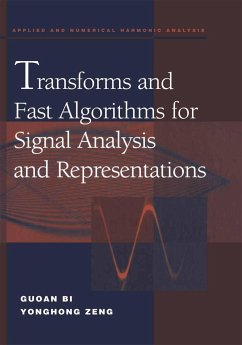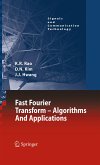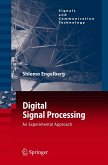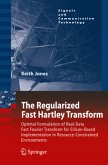Transforms have diverse applications in digital signal processing and other areas of science, engineering, and technology. Indeed, new transforms are continuously emerging to solve many new or open problems created by technological advances. To improve the implementation of these transforms, fast algorithms have been created and widely used over the last forty years. Although closely related to the discrete Fourier transform, novel fast algorithms for various transforms have to be developed separately in order to minimize computational complexity and implementation costs.
This book is a comprehensive presentation of results and recent progress on several commonly used transforms and their fast algorithms. In many cases, additional options are provided for new or improved fast algorithms, some not yet well known in the digital signal processing community.
. . . that is what learning is. You suddenly understand something you've un derstood all your life, but in a new way. Various transforms have been widely used in diverse applications of science, engineering and technology. New transforms are emerging to solve many problems, which may have been left unsolved in the past, or newly created by modern science or technologies. Various meth ods have been continuously reported to improve the implementation of these transforms. Early developments of fast algorithms for discrete transforms have significantly stimulated the advance of digital signal processing technologies. More than 40 years after fast Fourier transform algorithms became known, several discrete transforms, including the discrete Hart ley transform and discrete cosine transform, were proposed and widely used for numerous applications. Although they all are related to the discrete Fourier transform, different fast algorithms and their implementations have to be separately developed to minimize compu tational complexity and implementation costs. In spite of the tremendous increase in the speed of computers or processors, the demands for higher processing throughout seemingly never ends. Fast algorithms have become more important than ever for modern applications to become a reality. Many new algorithms recently reported in the literature have led to important improvements upon a number of issues, which will be addressed in this book. Some discrete transforms are not suitable for signals that have time-varying frequency components. Although several approaches are available for such applications, various inher ent problems still remain unsolved.
This book is a comprehensive presentation of results and recent progress on several commonly used transforms and their fast algorithms. In many cases, additional options are provided for new or improved fast algorithms, some not yet well known in the digital signal processing community.
. . . that is what learning is. You suddenly understand something you've un derstood all your life, but in a new way. Various transforms have been widely used in diverse applications of science, engineering and technology. New transforms are emerging to solve many problems, which may have been left unsolved in the past, or newly created by modern science or technologies. Various meth ods have been continuously reported to improve the implementation of these transforms. Early developments of fast algorithms for discrete transforms have significantly stimulated the advance of digital signal processing technologies. More than 40 years after fast Fourier transform algorithms became known, several discrete transforms, including the discrete Hart ley transform and discrete cosine transform, were proposed and widely used for numerous applications. Although they all are related to the discrete Fourier transform, different fast algorithms and their implementations have to be separately developed to minimize compu tational complexity and implementation costs. In spite of the tremendous increase in the speed of computers or processors, the demands for higher processing throughout seemingly never ends. Fast algorithms have become more important than ever for modern applications to become a reality. Many new algorithms recently reported in the literature have led to important improvements upon a number of issues, which will be addressed in this book. Some discrete transforms are not suitable for signals that have time-varying frequency components. Although several approaches are available for such applications, various inher ent problems still remain unsolved.
"This is perhaps the best text on transforms for signal processing since Nussbaumer's Fast Fourier Transform and Convolution Algorithms (Springer, 1982) and Elliott and Rao's, Fast Transforms: Algorithms, Analyses, Applications (Academic Press, 1982). Its nine chapters encompass almost all the knowledge needed to apply signal processing transforms successfully in practice. It is expected that the reader has had some exposure to transforms, so the first introductory chapter is very short; it mainly provides a sort of plan of things to come.... The authors have chosen to provide proofs only to essential theorems, like the Chinese remainder theorem, a good decision for a reference book, but perhaps not so good for a textbook. However, this book does lean more towards serving as a professional reference than does the more academic Nussbaumer text. The lack of proofs felt by some readers is largely offset by an abundance of concrete examples.... Chapter 8 is unique, in the sense that 'to the best of my knowledge' this material has never appeared in a book before. The chapter deals with integer transforms, which might be thought of as derived from the DCT and discrete sine transforms; these are gaining in popularity in various transform coding schemes for both video and audio.... In conclusion, this book is a highly practical and very welcome addition to the collection of texts on signal processing techniques and applications." -Analog Dialogue -








